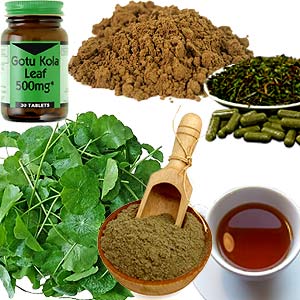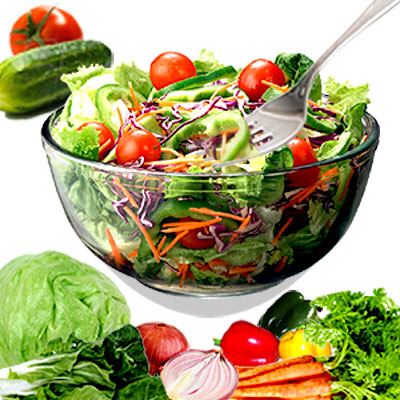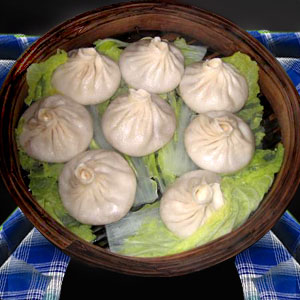Gotu Kola Benefits

An herbaceous annual plant from the family of Mackinlayaceae, Gotu Kola is used as a medicinal herb Ayurvedic medicine, traditional African medicine and traditional Chinese medicine to treat various diseases like bowel disorders, AIDS, elephantiasis, epilepsy, insanity, fever, eczema, diarrhea, and Amenorrhea.
Also referred as Vallarai in Tamil, Gotu Kola is particularly used in treating nervous disorders, premature aging and senility. Traditional medicines claim Gotu Kola as a 'Brain Tonic'.
Gotu Kola - Source and Facts
Gotu Kola is botanically called Centella Asiatica. Centella is largely found growing in the tropical and subtropical climates in Africa, Asia, Australia, India and South America and few parts of southeastern United States. Centella is a small green plant with slender stems and creeping stolons in green to reddish green color.
Its fan shaped leaves are said to resemble the structure of a human brain. Since the leaves are about the size of an old British Penny, Gotu Kola is also called as the Indian Pennywort, marsh penny and water pennywort. Gotu Kola has three main chemical constituents:
- Asiaticoside, which is classified as an antibiotic that helps in healing wounds especially in the treatment of leprosy and tuberculosis
- Brahmoside and Brahminoside, pair of chemicals that are diuretic in nature and have a slightly sedative action in large doses
- Madecassoside, a glycoside that is strong anti-inflammatory agent.
The Centella plant is also a source of Vitamin K, Magnesium, Calcium and Sodium. Centella is used as a leafy green in Sri Lankan Cuisine, where it is called Gotu Kola. In Sinhalese, Gotu means conical shape and Kola stands for leaf. The entire plant when cooked or used as a medicine is said to promote memory and intelligence. It is a good strengthening tonic for adrenals, and purifies blood when treating skin impurities. Gotu Kola is considered as food for brain, due to its ability in combating stress, depression and nervous breakdown.
Clinical studies reveal that Gotu Kola improves concentration and creates a calming effect on individuals prone to anxiety. A preliminary result in a clinical trial with mentally challenged children, conducted in 1992 has shown to increase the scores on intelligence test. Gotu Kola is also found to increase the brain's oxygen supply by protecting the blood vessels that supply oxygen to the brain.
Brahmi Gotu Kola
Brahmi, another famous Indian herbal adaptogen is said to possess similar properties as Gotu Kola. They both are often used interchangeably. Nevertheless, a recent scientific study has revealed that these two adaptogenic herbs belong to two different species.
Gotu Kola Benefits and medicinal properties
Since times immemorial, Indian Ayurvedic treatment has been using Gotu Kola as a rejuvenating herb. The herb is said to develop the crown chakra (the energy center at the top of the head), and to balance the right and left hemispheres of the brain.
Traditional medicinal properties and benefits
- Supports the central nervous system
- Increases intelligence and memory / Prevents senility
- Revitalizes the immunity system
- Increases hair and nail growth
- Strengthens the adrenals
- Helps in relieving digestion troubles
- Increases fertility
- Accelerates wound healing both internally and externally
- Accelerates spiritual progress by opening higher energy centers
- Used to purify blood and circulatory systems
- Used to treat chronic skin conditions such as eczema
- Used for opium detoxification, especially in Thailand
Scientific medicinal properties and benefits
Scientific studies indicate that Gotu Kola regulates collagen production and minimizes the scar formation on skin. It is also found effective to promote healing from episiotomy, and to relieve the red welts of psoriasis. Centella also acts on the skin to maintain a youthful appearance. Scientifically, Gotu Kola is used as an
- Anti-inflammatory
- Analgesic
- Adaptogenic
- Anti-carcinogenic
- Anti-ulcerogenic
- Mildly antibacterial
- Anti-viral
- Antiseptic
- Anxiolytic
- Cerebral tonic
- Circulatory stimulant
- Emmenagogue
- Febrifuge (reduces fever)
- Diuretic
- Laxative
- Nervine
- Veulnerary (to treat heals and wounds)
While tested in lab with rats that live in stressful conditions, Gotu Kola is found to benefit the adrenals by preventing their enlargement while also limiting excessive Corticosteroid production. In a laboratory setting, the herb is also found effective in destroying cultured tumor cells.
Gotu Kola Supplements
Gotu Kola is available in liposome tablets or tinctures. It is also included in many commercial topical creams that promote wound healing, collagen production, or reduce the appearance of cellulite.
Gotu Kola Tea
Gotu Kola is also available in all supermarkets as dried or powdered herbal tea. It is believed that one can get the benefits of Gotu Kola by drinking the herbal tea made from the herb. Traditional Chinese medicine argues that consuming Gotu Kola tea would be the ideal method of consumption. Following is the general recipe for preparing Gotu Herbal tea.
Boil 8 ounces of boiling water. Add 1 teaspoon of Gotu Kola tea, steep it for 5-10 minutes, strain and serve the tea hot. It is said that two cups of Gotu Kola tea each day can help relieve anxiety. However, remember as with any herb, it takes up to three weeks to see the results.
Gotu Kola side Effects and Warnings
Gotu Kola is generally safe in recommended doses. Possible side effects may include headache, stomach upset, nausea, dizziness and extreme dizziness. When applied topically or the when the Gotu Kola plants are handled, side effects may include skin allergy, burning sensations, itching and redness.
Women who are pregnant or nursing women should avoid Gotu kola. Gotu Kola may lead to miscarriage in pregnant women if taken internally or externally. Avoid Gotu Kola if you are taking tranquilizers or blood pressure lowering medications since the herb may have a narcotic effect.
It can also raise cholesterol and blood sugar level and hence people with cholesterol or diabetes should not take Gotu Kola in any form. Children under two years of age should not take Gotu Kola.
Top of the Page: Gotu Kola Benefits
Tags:#Gotu kola #Gotu kola tea #gotu kola benefits #gotu kola side effects #brahmi gotu kola #gotu kola leaf gotu kola supplements
 Food and Nutrition Facts
Food and Nutrition Facts Chamomile
Parsnip Soup
Dim Sum
Gazpacho Soup
Whole Grain Cereal
Jicama Nutrition
Bok Choy Stir Fry
Chia Seeds Benefits
Teff Nutrition
Kaniwa
Flax Seed
Wheatgrass Benefits
Kelp Benefits
Types of Chili Peppers
Medicinal Benefits of Pomegranate
Arugula Leaves
Maca Root
Pitaya Fruit
Benefits of Celery
Leek
Asparagus Benefits
Oyster Stew
Oyster Mushroom
Lupin Beans
Quinoa
Freekeh
Extra Virgin Olive Oil
Dill Pickle
Sauerkraut
Fat Burning Foods
Nutrition Chart
Food Combining
Calorie Counter
calories ...
Non Alcoholic Beverage
Punch Recipes
Food Label Nutrition
Homemade Sausages
Cooking Steak
Eating on a Budget
Budget Friendly Recipes
Quick Recipes
 Healthy Packed Lunch
Healthy Packed Lunch Overnight Oats Recipes
Eggplant Casserole
Brunch Recipes
Burrito Recipes
Muffin Recipes
Cupcake Frosting
Apple Crisp
Stir Fry Cooking
Seafood Salad Recipe
Cooking Corn on the Cob
Finger Food Recipe
Sandwich Recipe
Bread Stuffing Recipes
Easy Chili Recipes
Picnic Recipes
Edible Mushroom Recipes
Mushroom Soup Recipes
Dip Recipe
Tapas Recipe
Corned Beef Recipe
Canned Salmon Recipe
Tilapia Recipes
Crumb Cake
Flourless Chocolate Cake
Regional Food
 Lasagna Recipe
Lasagna Recipe Peruvian Ceviche
Chinese Food Recipe
Vietnamese Food Recipe
Malaysian Food
Korean Food Recipe
Indian Curry Recipe
Edible Rice Paper
Mexican Food Recipe
Quesadilla
Guacamole Dip
Italian Food Recipe
Spanish Food Recipe
Kosher Food
Falafel Recipe
Tandoori Chicken
Noodles
Canape
Couscous
Meatloaf
Chowder
Gumbo Recipe
Crockpot Recipes
Moroccan Food
Healthy Food
Pre Workout Snack
Matcha Tea
Simple food Swaps to Lose Weight
Foods to Beat Stress
Foods to beat Insomnia
Bone Density Foods
Prebiotic Foods
Kefir Grains
Agave Nectar
Spicy Trail Mix
Pesto Sauce
Homemade Hummus
Crab Cake Sauce
Bamboo Shoots Nutrition
Lemon Grass Plant
Butter Beans Recipes
Loose Green Tea
Seaweed Nutrition
Healthy Food
Low Fat Granola Bar
Steel Cut Oatmeal
Fruit Pizza
Pizza Toppings
Green Smoothie
Healthy Meal Planning
Delicious Mealtime Recipes
Heart Healthy Fats
Healthy Heart Recipe
Healthy Dinner Recipe
Healthy Dessert Recipe
Healthy Fast Food
Healthy Kid Recipe
Probiotic Food
Diabetic Friendly Foods
Fruit Salad Recipe
Bread Pudding
Tofu Recipe
Oat Bran
Broccoli Salad
Avocado Recipe
Iron Rich Food
Brain Foods
Antioxidant Food
Natural Diuretic
Low Fat Cooking Tips
Rice Pilaf Recipe
Low fat Chicken Recipe
Food Tips

Sous Vide Cooking Technique
Natural Sugar Substitute
Stevia Sugar Substitute
Sunflower Seeds Nutrition
Bouquet Garni
Cake Decorating Tips
High Satiety Foods
Thanksgiving Dinner
Safe Food Storage
Frozen Food Storage Tips
Cold Storage Food Tips
Leftover Recipe
Food Pyramid
Dairy Free Food
Microwave Cooking
Food Intolerance
Homemade Ice Cream
Apple Cider Vinegar
Benefits of Honey
Beverage Cooler
Food Poisoning Symptom
Food Allergy Symptom
Food Addiction
Top of the Page: Gotu Kola Benefits
Popularity Index: 102,526

